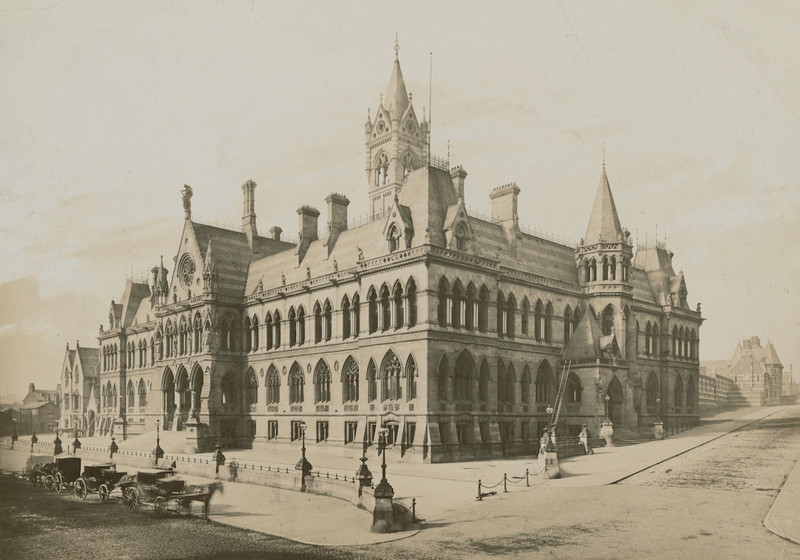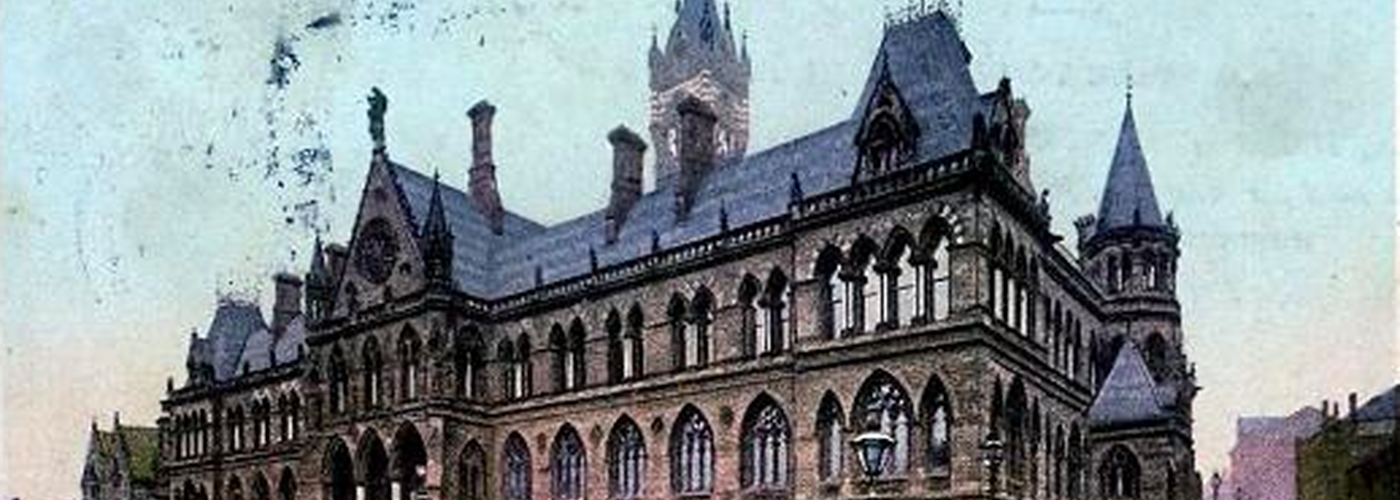Jonathan Schofield begins a new series of articles with a disappeared marvel
Manchester Assize Courts from 1874 on Bury New Road is acknowledged as one of the great 'lost' buildings of Britain. Alfred Waterhouse (architect of Manchester Town Hall, the University of Manchester's main block and Strangeways Prison, which lies immediately behind the site of the Assize Courts) won the competition to design the building at the tender age of 29.
His largely Venetian Gothic design popularised the style nationally and was the result of a competition attracting 107 entries. One of these came from rival Manchester-based architect, Thomas Worthington, who would also lose out to Waterhouse for the design of Manchester Town Hall almost a decade later.
The main criminal and civil courts could hold 800 people each
The building proved a particular inspiration for Manchester architects and many more city buildings would follow in the Venetian Gothic style, not least the Reform Club on King Street and Memorial Hall in Albert Square.

The fantastical skyline of the building, the clever interior planning, the quality of finish and the rich detail in applied arts all made it an immediate hit. It was big too. The main criminal and civil courts could hold 800 people each. Waterhouse tweaked the designs throughout construction causing consternation among the contractors. He would repeat this at the Town Hall with the same results.
A sinister note regards the many ‘hanged by the neck’ verdicts given there
But it was worth it. Charles Eastlake, a Victorian commentator, said: ‘Time has shown that Mr. Waterhouse's plan for the Assize Courts is admirably adapted for its purpose; and, with regard to the artistic merits of the work, it will be time enough to criticise when any better modern structure of its size and style has been raised in this country.’
Heavily damaged in World War II, this stunning building was demolished in 1957 while other shattered buildings such as the Free Trade Hall were restored and reopened. A sinister note with the Assize Courts regards the very many ‘hanged by the neck’ verdicts which were given there, the executions taking place at the neighbouring Strangeways Prison, the condemned having been taken to their deaths via a tunnel.
There are some surviving remnants of the old building.
There are statues in the Crown Court in Spinningfields rescued from the old building and carved by one of the Pre-Raphaelite brotherhood founders, Thomas Woolner. The theme is Common Law through the ages with life-size figures of kings, lawgivers and allegories such as the ‘drunk woman’ and the ‘good woman’. On the main concourse Sir Thomas More and a female embodiment of Mercy stare stonily at barristers in horsehair wigs and their clients.
How the statues were displayed in the Assize Courts can be understood from the statues and reliefs on Waterhouse’s aforementioned Manchester Town Hall. This also features sculpture by Woolner. In this instance, a beautifully realised and lifelike weaver bends to his work; a study in fierce concentration.
There is even something left at the original site of the Assize Courts. Poignantly the decorative boundary wall to Bury New Road survives. It’s a poor reminder, but at least a hint of the magnificence this struggling area of Manchester has lost.
This article first appeared in the book Lost & Imagined Manchester by Jonathan Schofield, published by Manchester Books Limited.















